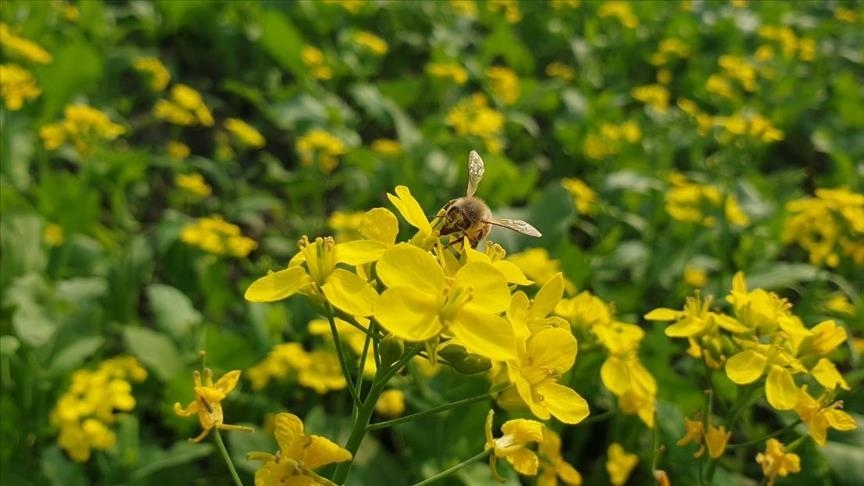Europe’s wild bees and butterflies facing 'dire' extinction crisis: Research
Nearly 100 more wild bee species are now considered threatened, bringing the total to 172 out of 1,928 assessed, research shows

LONDON
Europe’s wild bees and butterflies are spiraling toward extinction, a major new conservation assessment has warned, prompting urgent calls for action to halt the decline of these vital pollinators.
The latest European-level update to the International Union for Conservation of Nature’s (IUCN) Red List reveals a sharp rise in the number of species at risk.
Nearly 100 more wild bee species are now considered threatened, bringing the total to 172 out of 1,928 assessed – meaning one in 10 of Europe’s wild bees are at risk of extinction.
In 2014, that figure stood at just 77.
The IUCN reports that more than 20% of both bumblebee and cellophane bee species are now under threat.
Among them are 15 species of bumblebees – crucial pollinators for plants such as peas, beans and clover – and 14 species of cellophane bees, which play a key role in pollinating daisies and trees like red maples.
The crisis extends beyond bees. Europe’s butterflies are also facing mounting peril, with 65 out of 442 assessed species – around 15% – now threatened with extinction, up from 37 species in 2010.
More than 40% of butterflies found only in Europe are either threatened or close to becoming so.
Conservationists say the findings paint a “dire” picture for Europe’s pollinators, whose decline jeopardizes both natural ecosystems and food production across the continent.
Anadolu Agency website contains only a portion of the news stories offered to subscribers in the AA News Broadcasting System (HAS), and in summarized form. Please contact us for subscription options.







